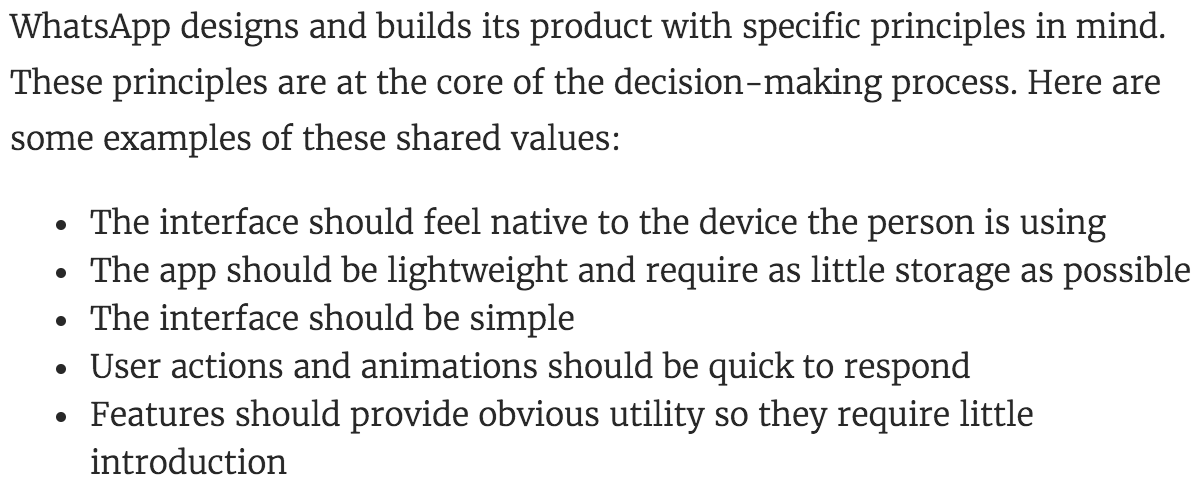WhatsApp Design Principles
Updated on

WhatsApp isn’t just a chatting app. It’s a masterclass in design discipline. Every pixel and feature screams “lightweight, fast, and native.” That’s why it works for billions of people, even on low-end phones.
The Marketing Lesson
The image nails WhatsApp’s five design rules: look native, stay light, be simple, feel fast, and only add useful features. Those choices remove friction and make the app feel instantly familiar.
Why It Works
- Zero learning curve = instant adoption
- Fast performance = happy users
- Lightweight files = global accessibility
- Native design = built-in trust
- Obvious utility = no explanation needed
Examples
- Google Search: one box, one goal
- Dropbox: files sync without effort
- Apple Notes: open, type, done
- Slack: quick shortcuts over menus
- TikTok: instant entertainment, no scroll fatigue
Analyzed by Swipebot
Loading analysis...